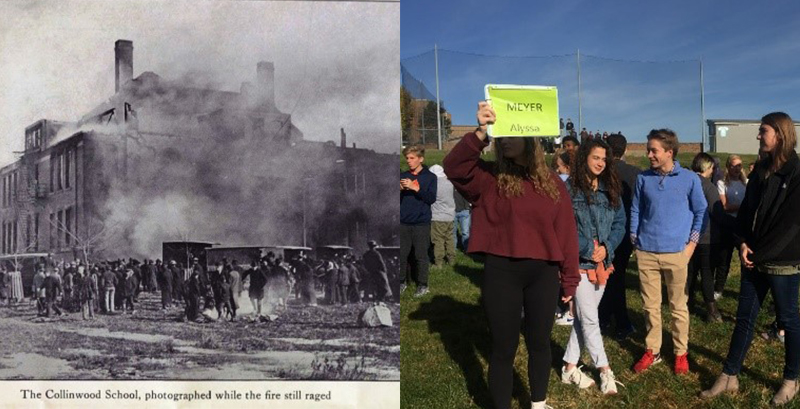School Safety programs have been around for a long time and have evolved considerably over the years. In response to an 1851 fire which killed 40 children at a New York City school, some teachers initiated the practice of fire drills with their students, training them to quickly and safely exit their buildings.1 Due to a lack of mandated safety standards in schools and/or lax enforcement, however, fire disasters continued to claim school children’s lives well into the mid-1900s.
A variety of other tragic school disasters occurred over the ensuing years, but nothing was done on a national level until 1950, when the prospect of a potential nuclear war with Russia lead to a collaboration between the U.S. Federal Civil Defense Administration and the Department of Education to develop a plan that might prepare children and schools for a possible attack. While the Duck and Cover campaign was the subject of some derision in later years, the drills wherein students dropped to the floor and huddled under their desks morphed into a component of earthquake and tornado preparedness.2
The early 1970s, with their focus on youth crime and drug use, lead to a rise of Federal school safety programs and policies. When reports on these efforts showed an increase, rather than a decrease, in the use of drugs (especially cocaine), alcohol, and weapons carrying, federal efforts were intensified and expanded. School-based drug prevention and education programs were enacted.3 The Gun-Free Schools Act passed, requiring zero tolerance policies as a condition to states receiving federal education assistance.4 Competitive grants were made to eligible (Local Educational Agencies) LEAs for projects and activities designed to help ensure all schools were safe and free of violence and included evidence-based programs to improve the disciplinary climate and provide school-based mentoring and life-skills training for students.5 The physical security of schools was increased, and readiness and emergency management training for school administrators was introduced. By 1998, the Safe and Drug-Free Schools and Communities Act (SDFSCA) had provided support for these efforts and many others to nearly every school district in the United States.6
Many states passed statutes that require every school or district to have a comprehensive school safety or emergency plan. These plans continue to evolve and broaden as new research leads to new approaches in student discipline. Today when one wants to discuss School Safety, the first question to consider is – which component? Do you want to know more about threat assessments or bullying prevention? Disaster preparedness or cyber-safety? Drugs or gangs? And options for dealing with the aftermath of a safety situation can be just as broad. Do you need a reunification plan or coping with grief? Self-care or restorative practices integrated within Multi-Tiered Systems of Support? The answers may vary due to state requirements, the school and community culture, and the individual needs of the staff and students involved.
Knowing this, the Behavioral Health and Prevention Services Department at the NWESD surveyed the 35 school districts within our region for their input on which school safety topics were of interest to them. Their responses helped us determine which courses to offer at our annual School Safety Summit on January 15 and 16, 2020. With classes ranging from Reunification to Trafficking to Emergency Operations Planning, every participant will be able to attend breakout sessions that address the needs of their school and district.
The Summit keynote speakers will include former FBI Special Agent Andre Simons, speaking on “Pre-Attack Behaviors of Active Shooters,” and Darren Laur, presenting “What are Students and Teachers Doing Online” and “Cyberbullying and Sexting.”
For registration questions, please contact administrative assistant Mia Troy.
1,2http://triggered.edina.clockss.org/ServeContent?rft_id=info:doi/10.1093/brief-treatment/mhm011
2 https://www.fema.gov/earthquake-safety-school
3https://www.govtrack.us/congress/bills/99/hr5484
5https://www2.ed.gov/legislation/GOALS2000/TheAct/sec702.html



